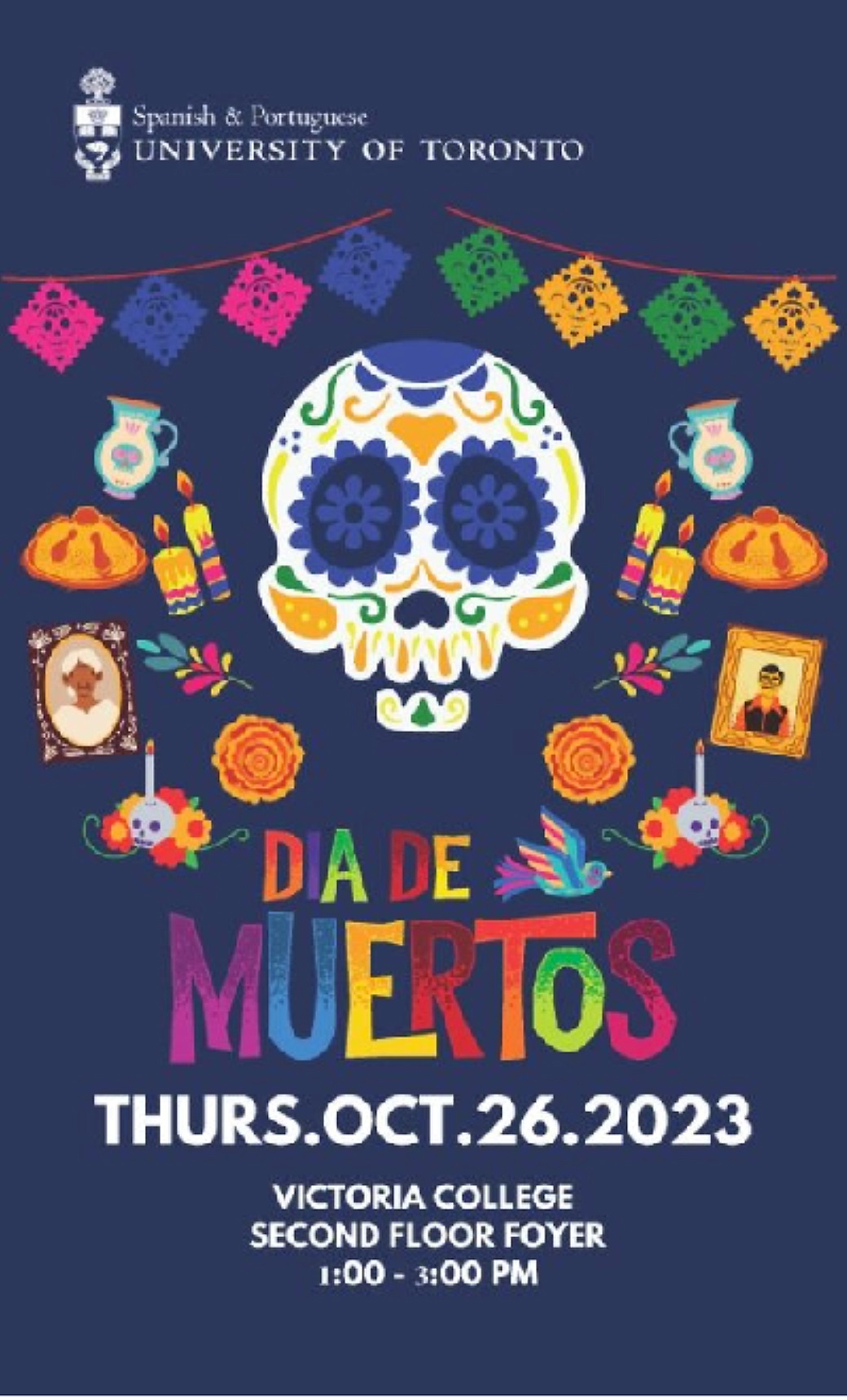On Nov. 1 and 2, Mexicans everywhere will observe one of their most cherished traditions: Día de los Muertos, or Day of the Dead.
Like Hallowe’en, with which it shares certain similarities, the holiday involves costumes, face painting and light-hearted celebrations. But in its blend of Christian origins and Indigenous influences, Day of the Dead is arguably a more complex and philosophical celebration: at once a joyful remembrance of those who have left us, and a bracing reminder of the fate that awaits us all.
“In Mexican culture, we don’t fear death,” says Juan Carlos Rocha Osornio, assistant professor, teaching stream in the Faculty of Arts & Science’s Department of Spanish & Portuguese. “Of course, we still feel very sad when a loved one passes away. But this celebration helps us to deal with it.”

In 2016, Rocha Osornio hosted his first Day of the Dead gathering at Victoria College. The celebration became a great way to expose his Spanish language and culture students to many of the fiesta’s colourful conventions. Unfortunately, the pandemic put an end to the annual celebrations in 2020 — which is why the gathering this fall, held on Oct. 26 marked a particularly joyful revival.

That afternoon the college’s second floor foyer was festooned with papel picado, the intricate and vibrantly coloured paper cutouts often seen at fiestas in Mexico. Guests enjoyed Mexican delicacies such as tamales and pan de muerto, a sweet bread typically served on Day of the Dead. Rocha Osornio also treated the audience to a calavera literaria, a satirical and light-hearted poem composed to mark the occasion.
The character most associated with Day of the Dead is “La Catrina,” a festively dressed skeleton who made her first appearance as a zinc etching around 1910. Since then, revellers adorn themselves with makeup and costumes to follow in her striking footsteps.
And a large ofrenda, or altar, is always part of the celebration. Rocha Osornio’s team, which included visiting professor Janaína Soares de Oliveira Alves and Boyuan Dong, a former Spanish student, set one up for the event and decorated it with sugar skulls, photos, skeleton dolls and traditional marigold flowers.
The ofrenda always carries mementos of deceased loved ones. Three years ago Rocha Osornio’s cousin, who was involved in civil aviation, died unexpectedly and a photo and model airplane were placed on the ofrenda in tribute to him. “Every year, setting up the altar is a way for us not to forget him. And it also gets us to think about the good times,” he says.

And good times, despite the somber theme, are very central to Day of the Dead. In line for tamales, fourth-year student Jason Webers says that gatherings such as this one are a fantastic complement to his Spanish language studies.

“Learning a language is a lot more than just learning grammar and vocabulary,” says Webers, a member of University College who’s planning to spend next semester studying Spanish in Mexico. “It’s also learning about culture, food and traditions. Learning those things helps to contextualize the language.”
Today, even people who don’t know any Spanish are becoming familiar with Day of the Dead. Rocha Osornio affirms that movies such as Coco and the James Bond film Spectre have done much to popularize the custom in countries outside Mexico. In fact, a Day of the Dead parade depicted in Spectre became part of Mexican tradition — where it hadn’t been before. “A parade wasn’t something we used to do in Mexico city, but now we do it every year,” he says.
Since joining the department of Spanish & Portuguese in 2016, Rocha Osornio has become well-known for his advocacy of interactive learning, hosting events such as tango workshops and karaoke nights, and facilitating conversational opportunities between new and native Spanish speakers through community-engaged learning and telecollaboration.
“Your Spanish is best when applied in a real-life situation,” he says. “The more you are in contact with the language, the better you will learn. I’m always encouraging my students to get into the culture: to feel, touch and even taste it.”

